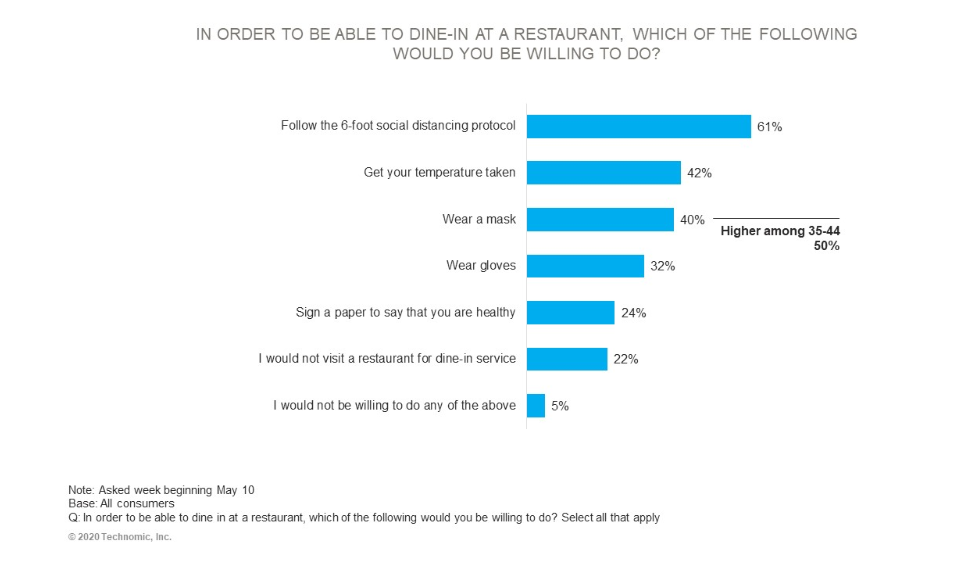By Aaron Chichioco, Contributor
The entire world is continually grappling with the encompassing effects of the COVID-19 pandemic. Millions of people have lost their livelihood, businesses have closed-up shop, and the mental states of people have been left vulnerable. And now governments across the globe are slowly reopening their economies. This article aims to provide restaurateurs with helpful tips in successfully reopening their business.
Covid-19 Business Stats
First, let’s look at some numbers.
As the gradual reopening of countries across the globe continues, the official counts of COVID-19 cases have surpassed 4 million, while fatalities have gone over the 280,000 mark. What’s important to note, though, is that according to McKinsey’s Executive Briefing on COVID-19 Implications for Business, official case counts may be only capturing a fraction of the true totals.
In a nutshell, what this ultimately means for everyone, is that while the reopening of economies might appear to reintegrate a sense of normalcy, this situation is far from over.
Speaking of the economy, a record 3.28 Americans filed for unemployment benefits in the week ending March 21, according to Business Insider. That number only would’ve grown in the months since, with the long-term economic impact estimated to be felt for years.
Additionally, more than 99% of businesses in the US are small businesses, employing nearly half of their entire workforce. These types of businesses don’t have the cash reserves required to endure a month-long interruption in operations. As such, more and more workers could continue to lose their jobs.
Focusing on the food and beverage industry, Technomic’s study found that more than half of consumers would rather social distance than wear protective gear, with diners aged 35-44 more likely to wear a mask to be able to dine in.
Meanwhile, there is growing scrutiny of around third-party delivery service providers, particularly when it comes to commission fees. These fees can be as high as 30-40%. As such, restaurants are encouraging customers to opt for direct delivery or pick-up if they really want to support local restaurants as this certainly isn’t the time to launch their own apps.
As a note, restaurants have seen sales from third-party delivery remain historically high. While most operators saw 5-20% attributed to third-party partners prior to March 15, 40% of operators saw more than 40% of their sales come from such. This means that as government health officials continue to grapple with the reopening of the economy and the risks it involves, take-outs and deliveries will continue to be an integral part of the food industry.
Food Business Reopening Checklist
Mandatory requirements from the government will vary from country to country, state to state, and in some cases, even city to city. But there are general items you need to ensure you’re able to tick-off before you can reopen your restaurant safely.
Know your local laws. Before you even begin to consider reopening, you should understand the scope of what you’re actually allowed to do. This will require close coordination with local authorities.
Consider risks to food safety. While your regular food safety management system might have sufficed in the past, it’s important to double-check any risks to food safety that may come with changes in procedures. This includes cross-contamination between raw and ready-to-eat foods, and hygiene of food packaging and storage (especially for deliveries).
Ensure staff is fit for work. Again, this might mean different things for different areas, so it’s always best to check with local laws and authorities. This also includes things like advice on the use of personal protective equipment (PPE), social distancing measures, and sick-time PTO.
Tips for Maintaining Restaurant Operations
#1. Manage Inventory, Focusing on Essentials
A number of restaurants have redesigned their menu to align with the changing demand. If you’re one of them, understand that purchasing of future inventory should reflect that change as well.
Take note of niche items that may no longer be considered essential during this new normal. Similarly, always be on the lookout for where you can cut costs (without sacrificing quality) so you can better manage a tighter budget.
#2. Talk to your Landlord
Speaking of finances, this might be one of the most important aspects you need to settle -- the space where you conduct business. If you haven’t yet, get in touch with your landlord and try to negotiate a concession in line with the new realities the business has to face. Maybe it’s putting the missed payments on the backend of the lease, or maybe asking for discounts in the first couple of months of reopening.
Everyone is affected so very few people will be lining up to take on leasing agreements. Be open with the challenges you’re facing and come up with a mutually beneficial agreement.
#3. Come up with Alternative Sources of Income
Simply offering takeout and deliveries might not be enough. A number of restaurants have been very entrepreneurial with their time off by coming up with creative revenue streams. In your case, maybe you can sell groceries as some restaurants in the US are doing during the lockdown.
As a restaurant owner, you have access to suppliers not everyone has, so why not use that to your advantage?
#4. Tug at Emotions
While most certainly not everyone can afford to do so, a number of restaurants used excess inventory to feed frontliners and marginalized communities during the lockdown. This was a great way to not only keep their brand visible during such trying times, but to also place it under a compassionate light.
If you can’t outright provide free meals, you can also partner with different organizations like food banks and promote that a certain percentage of your sales will be in support of such. People are looking for ways to help. Provide them with one and earn goodwill and business in the process.
#5. Provide Digital Value
Another way to continue to further your brand during the pandemic is by providing value to your audience in your different communication channels. While you can take advantage of cheaper pay-per-click ads, you’d be better served by putting out content that can add value to people’s lives at this specific time.
These can be through explainer posts that simplify government announcements, health tips, or even easy-to-prepare recipes they can do with limited ingredients. When you’re not always trying to market yourself, it makes your customers value your service even more.
And while you’re at it, you might want to check out SEO services that might also be more affordable at this time to help your content get seen.
#6. Emphasize the Health & Hygiene of your Staff
While this will need to be a fully collective effort if the world is to successfully reopen the economy without major glitches, you have you’re extremely diligent in doing your part. If you’re going to survive this pandemic financially, you’ll need to make sure that your customers are safe -- and it starts with your employees.
Strictly adhere to the government standards as much as you possibly can, and in certain instances, even try to go above and beyond it. It may seem tedious with everything else you need to address, but when your customers see the kind of effort you’re putting to ensure their health and safety, they’ll appreciate you even more.
Final Thoughts
Nobody is saying this is going to be easy. Even larger corporations have taken a major hit from this pandemic. But if you’ve managed to stay afloat up to this point, the above tips can help make the transition into the new normal a little bit easier.
What do you think would be the biggest challenge in successfully reopening the economy? Sound off in the comments below.
About the Author
Aaron Chichioco is the chief content officer (CCO) and one of the web designers of Design Doxa. His expertise includes web/mobile design and development, he also has years of experience in digital marketing, branding, customer service, eCommerce strategy and business management tactics as well. For more information about Aaron, visit http://designdoxa.com/about-us/.
Image Credit: Alexandra_Koch from Pixabay












![State of the Restaurant Industry 2021: Post-COVID Edition [INFOGRAPHIC]](https://images.squarespace-cdn.com/content/v1/56a2785c69a91af45e06a188/1624456093617-7MNR7QR90WNFTYRI8W5D/State+of+the+Restaurant+Industry.png)



